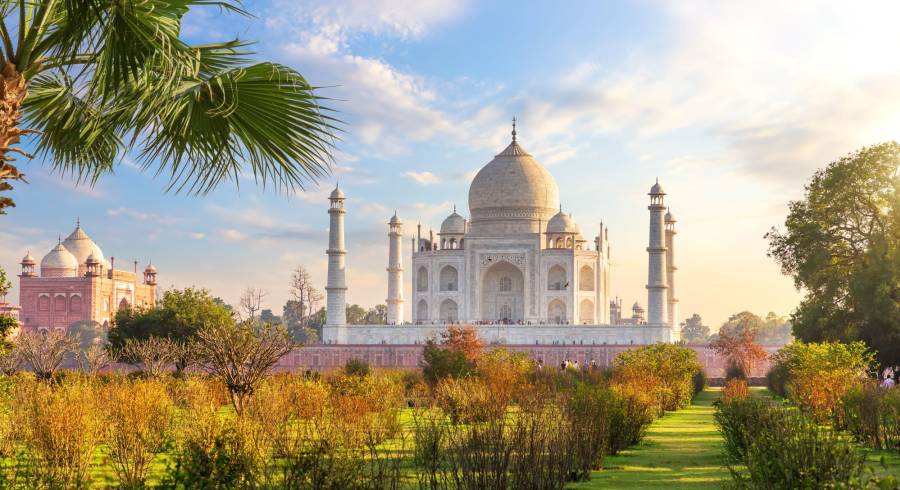Few sights in the world can match the iconic Taj Mahal. The magnificent monument in the historic city of Agra, India, is among the world’s most beautiful buildings. A masterpiece of Mughal architecture and a symbol of enduring love, the Taj Mahal is a UNESCO World Heritage site that attracts millions of visitors from around the globe who come to admire its grandeur and witness its timeless beauty.
Here’s what to see at the Taj Mahal:
1. The Architectural Marvel
A richly adorned regal gateway with impressive arches ushers you into the picturesque Taj Mahal complex, spread across an area of twenty-two acres. As you walk on, gradually the mesmerizing ivory-white marble monument comes into view. The Taj Mahal stands proudly with its large central dome, flanked by four minarets in perfect symmetry that give a three-dimensional effect to this striking edifice. Its marble exterior is adorned with intricately carved inlays, calligraphy, and decorative motifs.
The white marble mausoleum with a 35-meter-high dome is the highlight of the complex. It is surrounded by meticulously landscaped Persian-style quadrilateral gardens inspired by the gardens of Paradise described in the Quran. The pavilions and fountains with reflecting pools mirror the monument’s splendor, and the Yamuna River flowing nearby creates an idyllic ambiance that amplifies the Taj Mahal’s beauty.
2. A tragic romance
The Taj Mahal is an eternal love story immortalized in white marble and yet its majestic presence is shrouded in a sorrowful tale. It is a grand mausoleum, a palatial grave, built by a grieving emperor in memory of his queen. (In the inner chamber lie the cenotaphs of Shah Jahan and Mumtaz Mahal).
Legend has it that the Mughal Emperor Shah Jahan first spotted his future wife in the bazaar at Agra, selling silks and beads. He fell madly in love at first sight with Mumtaz and pursued her for five years before marrying her in 1612. Tragically, Mumtaz died after giving birth to their 14th child.
Shah Jahan constructed the Taj Mahal in her honor, with the help of architects and artists from all across the land. It took twenty-two years and 20,000 workmen including masons, stone cutters, inlayers, carvers, painters, calligraphers, dome builders and other artisans from India, Central Asia and Iran to complete the exquisite marble structure. Subsequently, Shah Jahan found himself stripped of his empire by his own son, imprisoned in a gilded cell with a poignant vista of the…
Click Here to Read the Full Original Article at Enchanting Travels…
